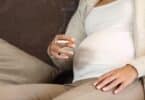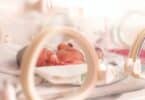Researchers, scientists and physicians continue to work towards an understanding of autism, hoping that the understanding brings them closer to a cure or better treatment options. Over the last year, a great deal of headway has been made in autism research and every day, researchers shed just a little more light on this incredibly complex disorder.
The most recent study, one performed at the University of Cambridge’s Autism Research Centre, made some very ‘surprising’ findings. In the study, 120 teenagers were shown a variety of faces with different genders and facial expressions. The teens were then asked to determine whether the faces were of males or females and if the expression of the faces were happy or neutral. Brain activity was monitored during the test.
Researchers found that teens with a sibling diagnosed with autism or Asperger’s displayed less of a response to the facial emotions than those who did not have a sibling with the disorder.
“The results of the siblings…showed such similar brain activity to people with autism, but from the outside, they appear totally unaffected,” said Dr. Michael Spencer, the child psychologist that led the study. Dr. Spencer also stated that, “there is a scientific consensus that genes are an overwhelming factor in developing autism as opposed to environmental factors.” This study adds weight to the current consensus.
The researchers that performed the study are currently about two-thirds of the way through with a four-year research project. Outlining some future goals for the research Dr. Spencer stated, “We hope to be able to identify what caused the brain to react to different faces and understand why people with autism have less brain activity in response to them. As yet, there is no treatment or cure. But if we can identify the building blocks of autism than we can hopefully find treatments for it.”
In light of the new information, finding better treatment may help improve the overall family dynamics in a home where autism exists. A child with autism can have difficulty in many areas of life and can even experience melt-downs. If a sibling that has only a dormant form of the gene is not able to pick up on facial cues of the sibling with the autism diagnosis, this could add fuel to the fire, so to speak. A better understanding could help parents of autistic children work toward a more harmonious existence in their home for all members of the family. Let’s hope that more understanding is found and that it is able to pave the way for additional treatment options.
Related Articles:







